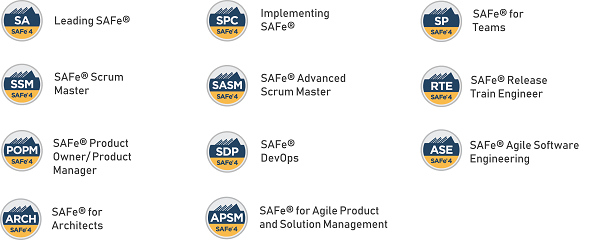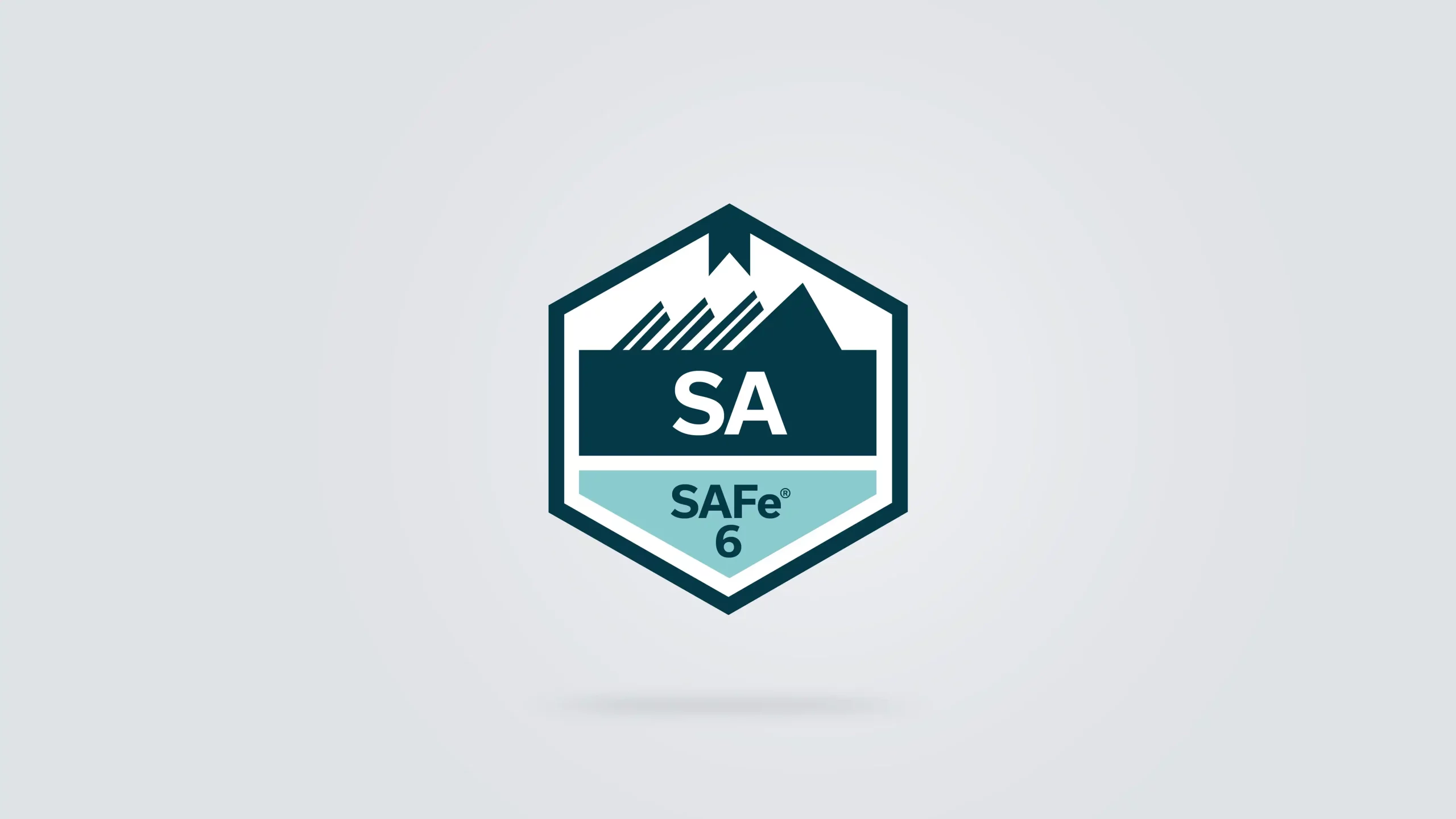Leading SAFe to Align Your Organization with Agile Finest Practices
Leading SAFe to Align Your Organization with Agile Finest Practices
Blog Article
Master Agile Practices With Comprehensive SAFe Qualification
In an increasingly complicated organization landscape, grasping Nimble practices via extensive SAFe certification has become an important expertise for professionals aiming to boost organizational efficiency. This accreditation not only provides a deep understanding of the SAFe framework however also cultivates necessary skills for promoting collaboration and alignment among groups. As organizations look for to navigate the difficulties of rapid modification, the execution of SAFe principles provides a path to boosted outcomes. However, the journey to accreditation includes more than just theoretical expertise; it requires a tactical method to application that can dramatically influence service agility. What does this entail?
Comprehending SAFe Structure
The SAFe (Scaled Agile Framework) structure functions as a structured approach for implementing Active techniques at range throughout large organizations. It gives a detailed method that straightens the various degrees of an organization, from group to profile, making certain that all components work cohesively in the direction of typical objectives. SAFe incorporates principles from Agile, Lean, and item development flow, supplying a distinct set of functions, practices, and responsibilities.
At its core, the SAFe structure makes up four degrees: Group, Program, Huge Solution, and Portfolio. Each degree addresses details elements of Nimble shipment, from taking care of small groups of developers to managing several programs and straightening tactical campaigns with service goals.
SAFe encourages collaboration among cross-functional teams, fostering an atmosphere where constant renovation and technology are critical. SAFe DevOps certification. By stressing alignment, transparency, and built-in high quality, the structure furnishes organizations to respond promptly to market adjustments while supplying worth to clients
Moreover, SAFe supports numerous methodologies, such as Scrum and Kanban, allowing companies to tailor their technique according to particular project requirements. This adaptability ensures a robust framework for companies intending to flourish in a quickly evolving organization landscape.

Advantages of SAFe Qualification
Frequently searched for in the Agile neighborhood, SAFe accreditation offers countless advantages for organizations and experts alike. One of the main advantages is the improvement of skills and knowledge in implementing the Scaled Agile Structure (SAFe), which outfits individuals with the tools necessary to drive successful Agile makeovers. This accreditation signifies a dedication to professional development, making candidates more affordable in the task market.
For companies, having certified specialists cultivates a culture of continuous improvement and partnership, vital for adjusting to transforming market demands. It allows groups to straighten their deal with strategic goals, inevitably enhancing performance and efficiency. Firms with a greater proportion of SAFe-certified employees often experience reduced time-to-market and enhanced high quality of deliverables.
In addition, SAFe accreditation helps with networking chances with other Agile professionals, allowing the exchange of ideal experiences and practices (SAFe Lean Portfolio Management). This collaborative network can considerably add to organizational and personal growth. In summary, obtaining SAFe certification not just improves private capabilities but also strengthens the general Agile maturity of an organization, bring about sustainable success in today's dynamic organization atmosphere
Key Components of SAFe
Structure on the benefits of SAFe qualification, recognizing the essential parts of the Scaled Agile Framework is crucial for efficiently implementing its principles. The SAFe structure consists of four primary levels: Team, Program, Huge Option, and Portfolio. Each degree addresses different facets of nimble practices, assisting in placement and distribution across the organization.
At the Group level, cross-functional original site teams work collaboratively using Agile methodologies, such as Scrum or Kanban, to supply incremental worth (SAFe For Architects). The Program level concentrates on the Agile Launch Train (ART), which is a long-lived team of Agile groups that plans, dedicates, and implements together. The Large Option degree addresses complicated solutions that require numerous ARTs to operate in show, making sure coordination and assimilation

Planning For SAFe Qualification
Preparing for SAFe certification needs a strategic method to ensure a thorough understanding of the structure. First, familiarize on your own with the core principles and values of the Scaled Agile Framework (SAFe) Testimonial sources provided on the Scaled Agile internet site, consisting of the SAFe structure documentation, study, and whitepapers, to develop a strong structure.

Furthermore, experiment sample examination inquiries to familiarize yourself with the style and kinds of concerns you may encounter. Signing up with study teams or online forums can assist in knowledge exchange and provide support from fellow candidates.
Applying SAFe in Organizations
Implementing the Scaled Agile Structure (SAFe) within organizations requires a structured strategy that straightens teams and procedures towards a common goal. The successful application of SAFe starts with establishing a clear understanding of its concepts, consisting of cooperation, transparency, and placement. Organizations should first assess their existing processes and recognize locations for renovation, guaranteeing they are ready for the cultural shift that SAFe involves.
Training and certification navigate to these guys for groups assist equip participants with the necessary abilities and understanding to run effectively within the SAFe framework. This consists of developing Agile Launch Trains (ARTs), which serve as the backbone for delivering value across the organization.
Routine planning sessions, such as Program Increment (PI) preparation, ought to be performed to integrate groups and prioritize job. Additionally, leveraging metrics to determine development and efficiency is crucial for recurring enhancement. By constantly using SAFe concepts and practices, organizations can accomplish higher dexterity, enhance partnership, and ultimately drive much better organization outcomes. Welcoming this framework placements companies to respond quickly to market adjustments and client needs.
Conclusion
Finally, understanding Agile practices via detailed SAFe certification significantly enhances professional capabilities and adds to business effectiveness. The understanding acquired from comprehending the SAFe structure, along with its crucial parts, assists in successful makeovers and enhances cooperation amongst groups. Moreover, getting this certification settings individuals favorably in an affordable work market, underscoring the significance of constant improvement and placement within companies. Embracing SAFe eventually results in enhanced performance and higher high quality deliverables.
The SAFe (Scaled Agile Framework) framework offers as an organized strategy look at this web-site for executing Active methods at range throughout huge companies. One of the main benefits is the enhancement of skills and expertise in executing the Scaled Agile Framework (SAFe), which outfits people with the tools essential to drive effective Agile makeovers. In recap, obtaining SAFe qualification not just enhances specific abilities yet also reinforces the general Agile maturation of a company, leading to lasting success in today's vibrant business environment.
Structure on the advantages of SAFe certification, comprehending the key components of the Scaled Agile Framework is vital for properly implementing its principles.Carrying Out the Scaled Agile Structure (SAFe) within companies necessitates a structured method that lines up groups and processes towards a typical goal.
Report this page